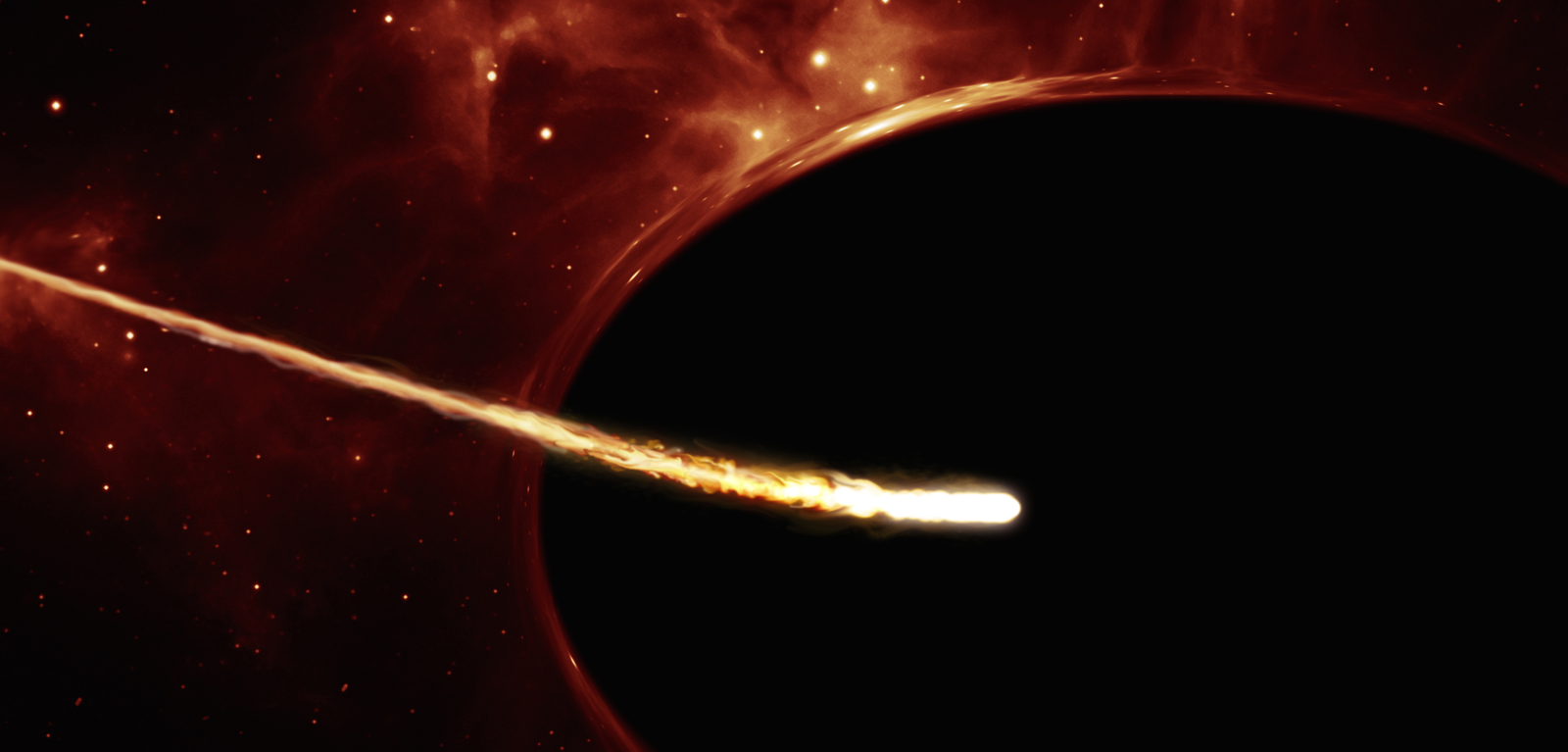Queen’s University astronomers help discover black hole swallowing star
Astronomers at Queen’s University are part of an international team that has solved the mystery of an extraordinarily brilliant point of light seen in a distant galaxy.

Dubbed ASASSN-15lh, the light was thought to be the brightest supernova ever seen, but new observations propose that the source was an even more extreme and very rare event — a rapidly spinning black hole ripping apart a passing star that came too close.
In 2015, the All Sky Automated Survey for SuperNovae (ASAS-SN) detected an event, named ASASSN-15lh, that was recorded as the brightest supernova ever — and categorised as a superluminous supernova, the explosion of an extremely massive star at the end of its life. It was twice as bright as the previous record holder, and at its peak was 20 times brighter than the total light output of the entire Milky Way.
The new paper published today (Monday 12 December) in Nature Astronomy is led by Giorgos Leloudas at the Weizmann Institute of Science, Israel, and the Dark Cosmology Centre, Denmark.
Professor Stephen Smartt from Queen’s University’s Astrophysics Research Centre is the lead and principal investigator of the project at the European Southern Observatory, which gathered the crucial data. These new observations led to the team proposing a new explanation for this extraordinary event.
Professor Smartt said: “This object puzzled us for months. Our international team has experts who work on the most extreme physics in the Universe and the initial explanation of a supernova just didn’t seem to fit all the data comfortably. The team studied all the data carefully, kept observing, applied models and physics and considered all possible explanations. This is an excellent example of international collaboration and scientific team work, ably led by Giorgos Leloudas.”
Dr Leloudas said: “We observed the source for 10 months and have concluded that the explanation is unlikely to lie with an extraordinarily bright supernova. Our results indicate that the event was probably caused by a rapidly spinning supermassive black hole as it destroyed a low-mass star.”
In this scenario, the extreme gravitational forces of a supermassive black hole, located in the centre of the host galaxy, ripped apart a Sun-like star that wandered too close — a so-called tidal disruption event, something so far only observed about 10 times. In the process, the star was “spaghettified” and some of the material was converted into huge amounts of radiated light. This gave the event the appearance of a very bright supernova explosion, even though the star would not have become a supernova on its own as it did not have enough mass.
The team based their new conclusions on observations from a selection of telescopes, both on the ground and in space. Queen’s leads PESSTO (Public ESO Spectroscopic Survey of Transient Objects - Europe’s premier survey of the dynamic sky at the European Southern Observatory. The team also used data from the world’s most powerful facilities, including the Very Large Telescope at ESO’s Paranal Observatory, and the NASA/ESA Hubble Space Telescope.
In particular, the data revealed that the event went through three distinct phases over the ten months of follow-up observations. These data overall more closely resemble what is expected for a visible tidal disruption than a superluminous supernova. An observed re-brightening in ultraviolet light as well as a temperature increase further reduce the likelihood of a supernova event. Furthermore, the location of the event — a red, massive and passive galaxy — is not the usual home for a superluminous supernova explosion, which normally occur in blue, star-forming dwarf galaxies.
Although the team say a supernova source is therefore very unlikely, they accept that a classical tidal disruption event would not be an adequate explanation for the event either.
Team member Nicholas Stone from Columbia University, USA, elaborates: “The tidal disruption event we propose cannot be explained with a non-spinning supermassive black hole. We argue that ASASSN-15lh was a tidal disruption event arising from a very particular kind of black hole.”
The mass of the host galaxy implies that the supermassive black hole at its centre has a mass of at least 100 million times that of the Sun. A black hole of this mass would normally be unable to disrupt stars outside of its event horizon — the boundary within which nothing is able to escape its gravitational pull — and therefore could not produce a tidal disruption event. However, if the black hole is a particular kind that happens to be rapidly spinning — a so-called Kerr black hole — the situation changes and this limit no longer applies.
Dr Leloudas concluded: “Even with all the collected data we cannot say with 100% certainty that the ASASSN-15lh event was a tidal disruption event, but it is by far the most likely explanation.”
The full ESO news release and accompanying images are available here.
Media
Media inquiries to Anne-Marie Clarke or Michelle Cassidy at Queen’s University Communications Office T: +44 (0)28 9097 5310 E: comms.officer@qub.ac.uk